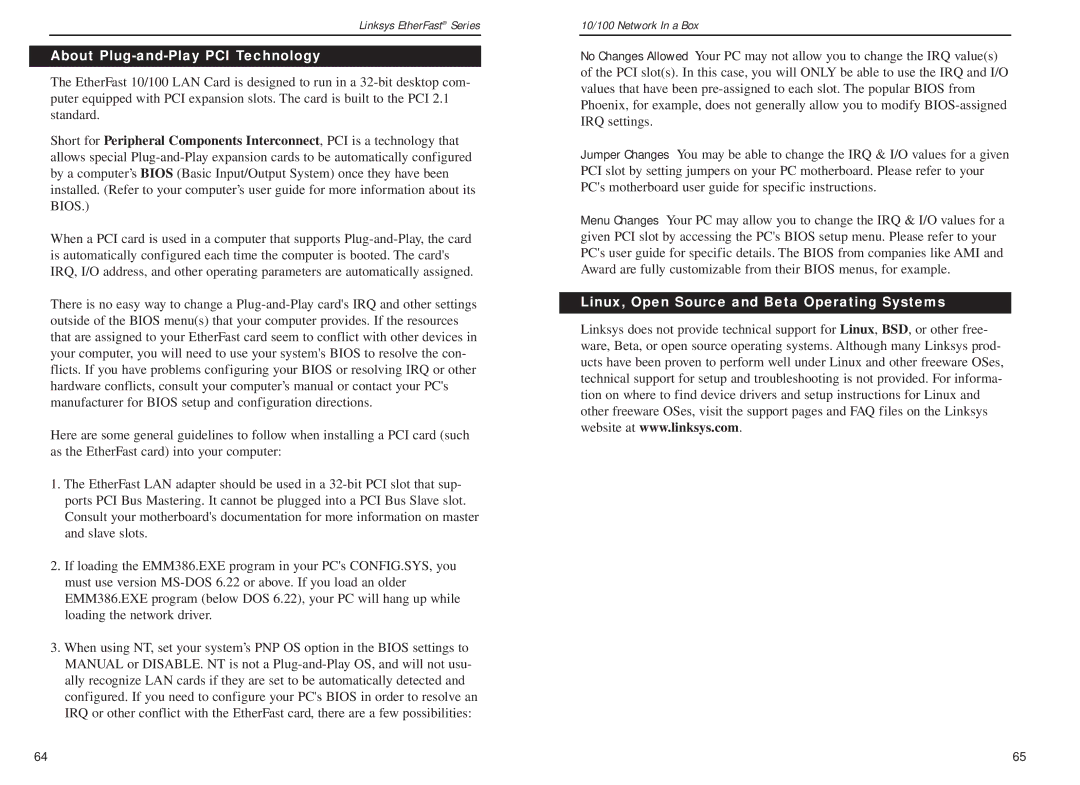
Linksys EtherFast® Series
About Plug-and-Play PCI Technology
The EtherFast 10/100 LAN Card is designed to run in a
Short for Peripheral Components Interconnect, PCI is a technology that allows special
When a PCI card is used in a computer that supports
There is no easy way to change a
Here are some general guidelines to follow when installing a PCI card (such as the EtherFast card) into your computer:
1.The EtherFast LAN adapter should be used in a
2.If loading the EMM386.EXE program in your PC's CONFIG.SYS, you must use version
3.When using NT, set your system’s PNP OS option in the BIOS settings to MANUAL or DISABLE. NT is not a
10/100 Network In a Box
No Changes Allowed Your PC may not allow you to change the IRQ value(s) of the PCI slot(s). In this case, you will ONLY be able to use the IRQ and I/O values that have been
Jumper Changes You may be able to change the IRQ & I/O values for a given PCI slot by setting jumpers on your PC motherboard. Please refer to your PC's motherboard user guide for specific instructions.
Menu Changes Your PC may allow you to change the IRQ & I/O values for a given PCI slot by accessing the PC's BIOS setup menu. Please refer to your PC's user guide for specific details. The BIOS from companies like AMI and Award are fully customizable from their BIOS menus, for example.
Linux, Open Source and Beta Operating Systems
Linksys does not provide technical support for Linux, BSD, or other free- ware, Beta, or open source operating systems. Although many Linksys prod- ucts have been proven to perform well under Linux and other freeware OSes, technical support for setup and troubleshooting is not provided. For informa- tion on where to find device drivers and setup instructions for Linux and other freeware OSes, visit the support pages and FAQ files on the Linksys website at www.linksys.com.
64 | 65 |
